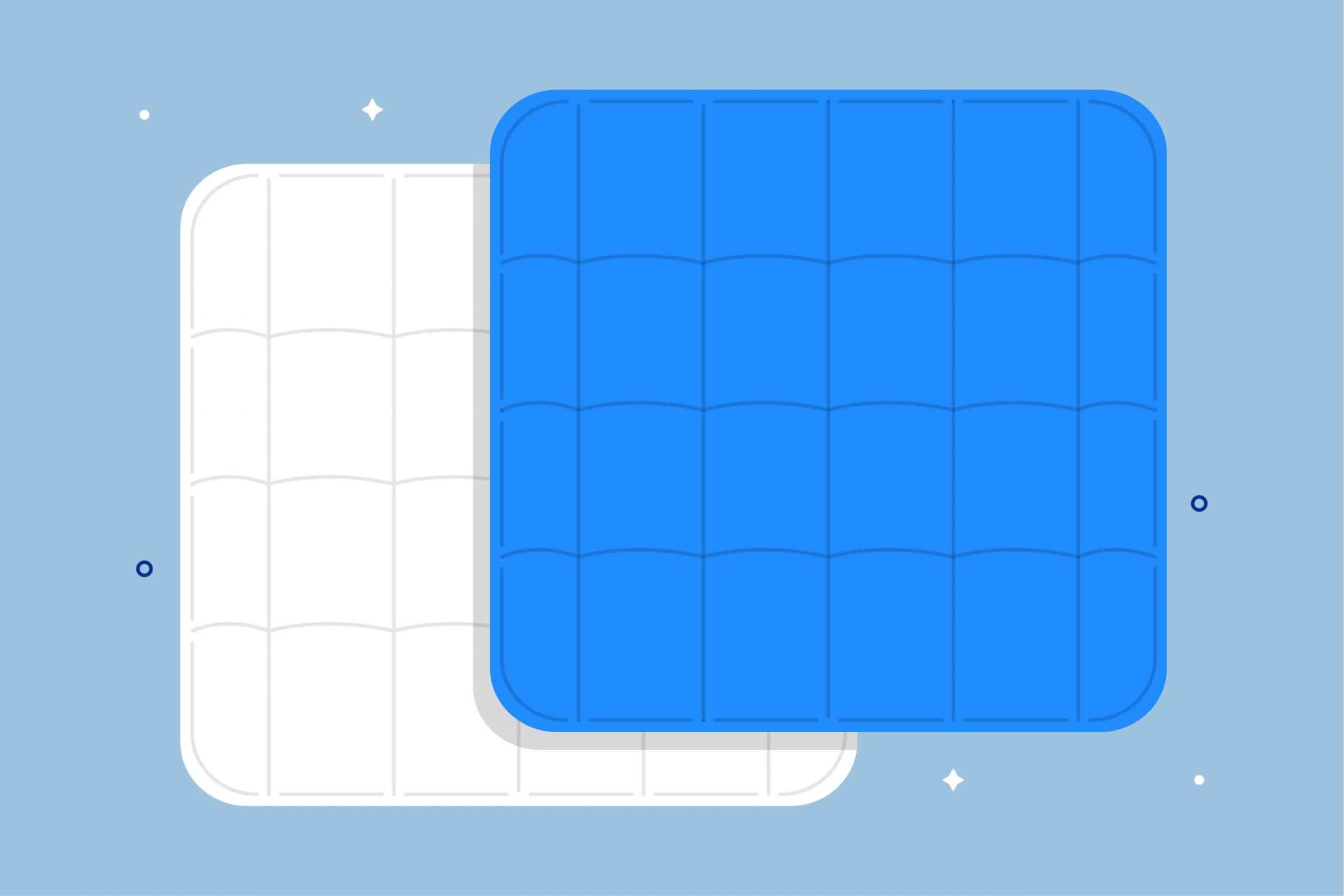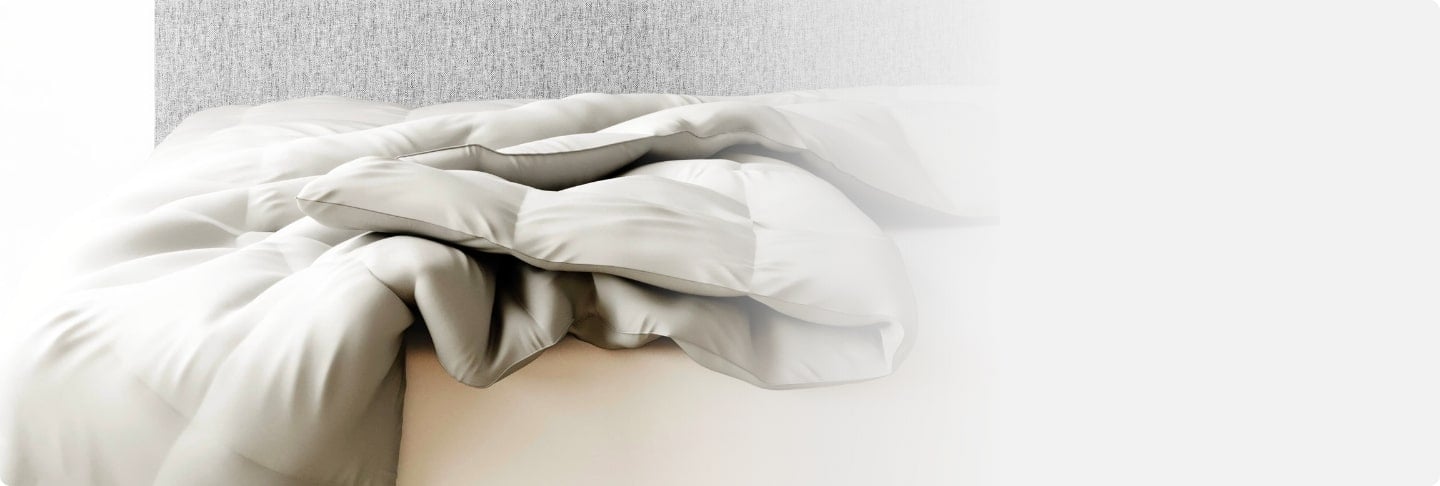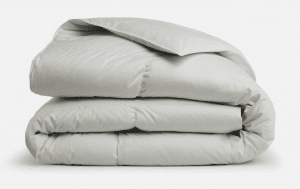Key Takeaways
- Consider Fill Type and Warmth: When choosing a down comforter, consider factors like fill type (goose or duck down), warmth level (determined by fill power and fill weight), and the materials used in the shell. Goose down tends to be warmer and more expensive, while duck down is a budget-friendly option. Fill power and weight affect the warmth of the comforter, with higher values indicating more warmth.
- Pay Attention to Weave and Stitching: The weave of the comforter’s shell material (percale or sateen) affects its feel and breathability. Additionally, the stitching pattern (baffle box, gusseted, sewn through, or diamond quilt) can impact how evenly the fill is distributed, influencing the comforter’s warmth and comfort.
- Proper Maintenance and Warranty: Most down comforters are dry clean only to preserve the natural oils in the down clusters. Using a duvet cover can help protect your comforter from stains. Check the warranty for any manufacturing defects, as it can provide reassurance and allow for exchanges or repairs in case of issues.
A down comforter is an essential component to a cozy bed. The soft and fluffy blanket surrounds you in comfort. It may even help you fall asleep faster by enhancing your comfort level.
Down comforters are soft and fluffy, filled with down clusters that give you the best comfort without sharp quills that can poke through the material. They’re warm, yet breathable so you’re less likely to wake up feeling hot. But how do you find the right down comforter?
We discuss the factors to consider when searching for the best down comforter, including the difference between goose and duck down and how to find the right comforter size.
Quick Guide: A 30-Second Summary
| Best Comforter Overall | Amerisleep Recover+ Comforter |
What to Look for in the Best Down Comforter
Before choosing a down comforter, there are a few aspects you should consider first. Otherwise, you may not receive the right comfort level from the first comforter you bought off the shelf.
Some of these factors include knowing the difference between goose and duck down, the right warmth level, the different weaves, and how to find the best size. Doing research beforehand is an extra step, but it can help you find the best down comforter.
Goose vs. Duck Down
Down comforters contain either goose or duck down. Goose down contains larger down clusters and traps more heat. This is why goose down comforters are so popular that they’re also more expensive than duck down.
On the other hand, duck down has smaller clusters and provides less insulation, but duck down comforters cost less than goose down. For those on a budget and looking for a down comforter, duck down is an excellent choice.
Warmth Level
One major component that can influence which comforter you choose is the warmth level you’re looking for. Is the comforter for cold weather, warm seasons, or year-round use? To find the right warmth level, look at a potential comforter’s fill power and fill weight. These two aspects influence how much warmth a comforter has.
Fill Power
Fill power is defined by how much material is contained inside one ounce of fabric, and measured in grams per square meter (GSM). The higher the fill power, the more insulation a down comforter has to offer. Most comforter brands list the GSM in the product description or specifications.
For example, if you’re looking for a spring or summer comforter, the fill power should be 400GSM or less. For a cold-weather comforter, 600GSM or higher. Then, if you want to enjoy a year-round comforter, the fill power should be between 400GSM AND 600GSM.
Fill Weight
Fill weight refers to the number of ounces inside a comforter. Fill weight is the driving force behind how much warmth a comfort has. The higher the fill weight, the warmer the comforter.
Shell Material
The outer material that encases the fill is the down comforter’s shell. Shells can come in a variety of fabrics, but the two most common are cotton and silk. Some brands may have cotton-blend or polyester shells, but these materials are typically found in down alternative comforters.
Cotton
Cotton is a natural material known for its breathability and softness. It’s also one of the most popular bedding materials. Many all-season down comforters have cotton shells because the material keeps you warm, but maintains continuous airflow. Cotton keeps you warm and cozy in the winter and cool during the summer.
Silk
Silk is another natural material used in comforter shells. Silk is a breathable, wrinkle-resistant, and notably strong fiber. The material is also more expensive, but the smooth and shiny material may be worth it if you prefer silk.
Stitching
How the comforter is stitched affects not just the blanket’s appearance, but how the fill is distributed. Stitching prevents fill from clumping in one area, so you can enjoy a soft, even surface.
Filling that bunches up in a specific section doesn’t give you balanced warmth. One side of the bed may feel warmer than the other. Down comforters have one of four basic stitchings: baffle box, gusseted, sewn through, and diamond quilt.
Baffle Box
In a baffle-box construction, an extra piece of material is sewn between the front and back sides in a uniform pattern. Baffle box stitching creates a checkerboard pattern with 3D boxes. Many comforters meant for cold climates have a baffle box design.
Gusseted
With gusseted stitching, an extra strip of fabric is used to connect the front and back sides. Gusseted stitches create more loft in a comforter when filled. The filling expands upward instead of outward.
Sewn Through
Sewn-through stitching is similar to the baffle-box. The front and back sides are sewn together but without the extra strip of material. This creates a 2D box that doesn’t have as much fill.
Diamond Quilt
Diamond quilt stitching has two continuous lines running parallel to each other, creating a diamond-shaped pattern. This type of stitch creates compartments for filling and prevents clumping.
Weave
Weave refers to how the shell material is woven and can determine how a comforter feels. Weave also affects a comforter’s breathability. There are two common types of weave: percale and sateen.
Percale is a close-knit weave containing thinner threads. This plain weave has a crisp, lightweight feel, compared to the denser sateen weave, providing a cooler sleep.
Sateen uses thicker threads in its weave, producing a heavier material with a silk-like sheen. The sateen weave is also breathable but is warmer than percale. If you prefer smoother material, sateen is your best option.
Thread Count
Thread count refers to how many fibers are woven together to create one square inch of fabric. Thread count ranges from 250 to over 1,000, but beware of any bedding material with a thread count of more than 800.
Most materials with higher thread count are not durable. Plus, it’s impossible to fit that many single-ply threads in one square inch. Some bedding manufacturers separate single-ply fibers and twist them together, creating multi-ply fibers. Instead of counting the single-ply fiber as one thread, they count each fiber, boost thread count, and make a down comforter seem more luxurious than it actually is.
You may notice some down comforters have higher prices because the thread count is higher. However, separating a single-ply fiber makes the thread weaker. A high thread count comforter may only last a few years compared to a comforter with a thread count under 800.
If you’re looking for an all-season down comforter, the thread count “sweet spot” you should look for is between 300 to 500. A comforter with 500 to 700 thread count is excellent for cold weather down comforters.
Comforter Size
When it comes to finding the right comforter size, you may notice that the dimensions are not exact when comparing several down comforters with the same size. Some may appear longer or shorter than others. That’s because bedding manufacturers add or remove inches to adjust how a comfort drapes over the side of the bed.
You want a down comforter to drape over the mattress, fully covering the bed’s sides. The best way to find the right-sized comforter is by measuring how thick your mattress is and adding those inches to each side of the bed’s measurements. For example, a queen size mattress is 60 inches wide and 80 inches long. If your bed is 12 inches thick, you would add 12 to each side, meaning that your comforter should be at least 72 inches wide and 92 inches long.
Seasonal vs. Year-Round
Not all comforters are built for year-round use. Some bedding companies create comforters meant for specific seasons. Manufacturers usually specify if a particular comforter is for warm climates or cold weather. Check out the product description to find out if a potential comforter is for seasonal or year-round use.
Maintenance
Keep in mind that most down comforters are dry clean only because down feathers contain natural oils. These natural oils are what keeps feathers nice and fluffy.

Chemicals from laundry detergent strip the down feathers of these oils, causing the down comforter to go flat. Dry cleaners use special solvents, effectively cleaning your comforter without damaging the material.
Take a look at the care instructions to see how best to maintain your down comforter. Following these guidelines helps the comforter to last for years to come.
Another way to help your down comforter last is by adding a duvet cover. Many down comforter brands have built-in corner tabs to secure the comforter inside a duvet cover. Duvet covers protect your down comforter from stains. In case of an accident, simply remove the duvet cover and place it in the washing machine for easy cleanup.
Warranty
A warranty reassures customers of a sound purchase. Enjoy your down comforter fully without having to replace it because of any manufacturing defects prematurely. These defects include loose seams and small tears.
In case of a defect, the warranty allows you to exchange the faulty comforter for repairs or a replacement. Most comforter warranties last about a year, though some may last longer, depending on the brand.
Down vs. Down Alternative
Down is the soft fluff underneath a bird’s exterior feathers. Birds rely on down for insulation. These fluffy clusters don’t have sharp quills, which is why down is a popular fill material for comforters. Down provides the ultimate softness without painful quills poking through the material. Down clusters are also light and breathable, so you feel warm and cozy without overheating.
In contrast, down alternative fill mimics the feel of down. Down alternative comforters usually contain synthetic materials, like polyester. Down alternatives are soft, but may not be as plush as down. Other down alternatives include rayon and cotton. Unlike down, down alternative comforters are hypoallergenic.
The materials are less likely to attract dust mites and other allergens, making down alternatives the better option for those with allergies. You’re less likely to experience allergic reactions at night with a down alternative comforter. If you prefer a down alternative comforter over down, we recommend our Recover+ Comforter.
Why Choose the Amerisleep Recover+ Comforter?
The Amerisleep Recover+ Comforter is so soft, you’ll love wrapping yourself in the fluffy, lightweight material. Instead of down, we use lyocell, cotton, polyester, and FDA-determined Celliant® technology. The cotton shell wicks away moisture and provides optimal airflow. The shell is also infused with Celliant® technology.
This material transforms body heat into infrared energy. Celliant® is also proven to improve blood circulation and promote a faster recovery. You can sleep cool and comfortably and wake up the following morning, refreshed and ready for the day.
The polyester, lyocell, and Celliant® fill are soft and cozy. You won’t have to worry about waking up hot. Our fill material also makes the Recover+ Comforter the perfect choice for any season.
FAQs
How often should I wash my down comforter?
Down comforters don’t need to be washed as often as bed sheets. Your body has less direct contact with your comforter, so it’s less likely to absorb body fluids and dead skin cells. Down comforters should be washed two to three times a year, or when the seasons change. But, if you don’t sleep with sheets, you’ll want to wash your comforter every week to keep it nice and fresh.
How much does a down comforter cost?
Down comforters are usually more expensive than other bedding materials because they mostly contain pure fluff from ducks and geese. The average price for a down comforter ranges between $80 to $850, depending on the type of down and the comforter size. Comforters with goose down will cost more than duck down because goose down has larger clusters.
Why are white down feathers popular for comforters?
If you’ve ever thought why down comforters are filled with white feathers, the reason has nothing to do with quality. Down feathers, no matter what color, provide excellent softness to your sleep experience. White down feathers are more preferable because the feathers won’t show through the shell material. Most bedding manufacturers use the color white as the shell material because it’s neutral and pairs well with any color.
Why does my down comforter smell?
Over time, your comforter absorbs dust mites, bacteria, dead skin cells, and body fluids. These allergens can cause a musky smell and may affect your sleep. Allergens build up and can make it harder to breathe at night. You may also experience itchy, watery eyes, sore throat, and sneezing. Regularly washing your comforter reduces allergens and keeps your comforter smelling fresh.
What is the best comforter for hot sleepers?
If you tend to sleep hot, then a lightweight comforter is the best option. Lightweight comforters have low fill power and fill weight, so you can enjoy a down comforter’s coziness without waking up from uncomfortable night sweats due to overheating. Cotton down alternative comforters is also a great option. Cotton is naturally breathable and doesn’t retain heat.
Conclusion
Down comforters are an excellent addition to your sleep system. They give your bed a cozy and inviting appearance. The plushness they bring boosts your comfort level and may improve your sleep.
About the author
April Mayer is a sleep expert and writer with a degree in exercise physiology. She has dedicated her career to exploring the relationship between sleep and productivity. Her insightful articles, such as "The Surprising Way Your Mood Might Be Messing With Your Productivity" and "Wake Up to More Productive Mornings," have been featured in reputable publications like Forbes, Greatist, Real Homes, Thrillist, Tom's Guide, and Eat This, Not That. With a passion for helping others lead more productive lives through restful sleep, April offers valuable expertise on foods and vitamins for better sleep. As a trusted member of the Early Bird team since March 2020, she continues to provide informative and well-researched content.
View all posts






